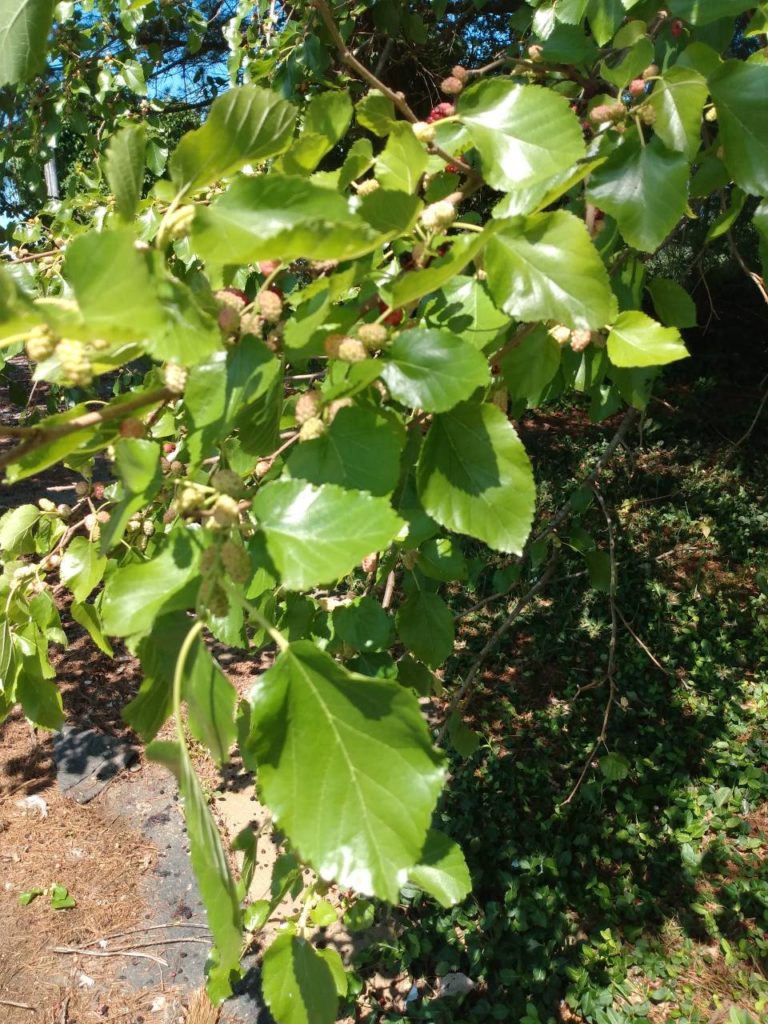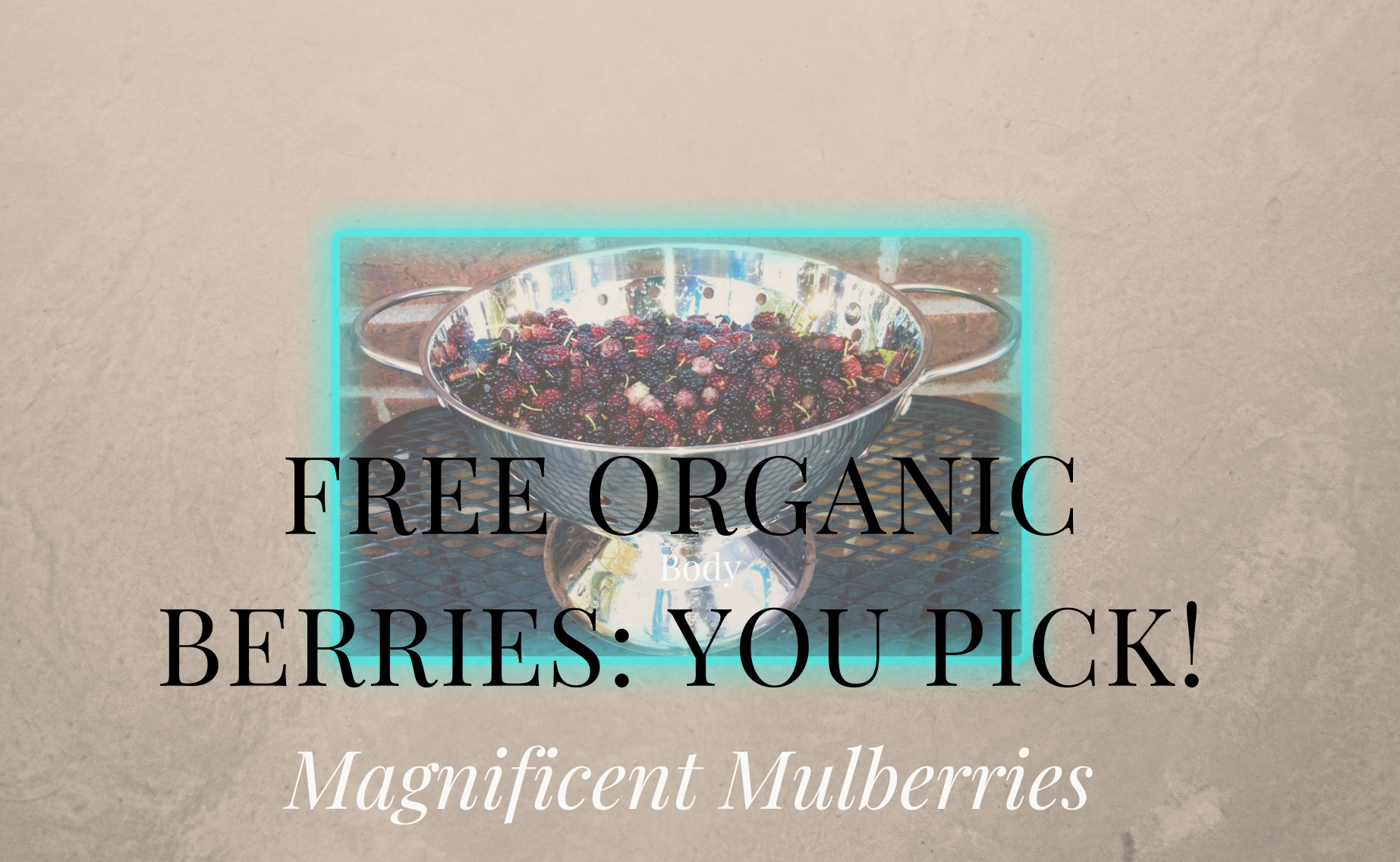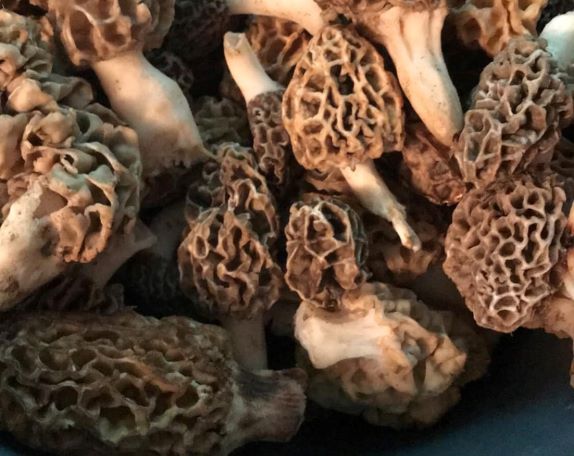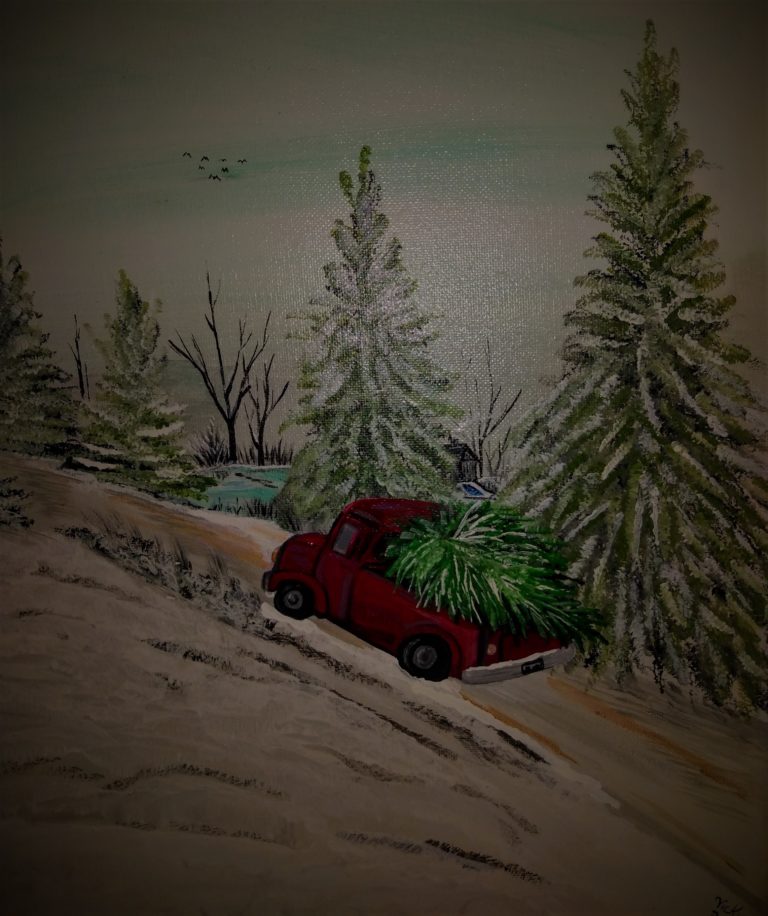Free Organic Berries: You Pick!
What if someone told you that they were going to give you a gallon of free organic berries. The only catch is, that you have to pick the berries yourself, would you be excited to go berry picking? Over the last couple of weeks, I have had just that opportunity. Only in this case, the generous giver was none other than nature. If you read my post on “Foraging for Wild Foods: A Skill Worth Learning”, you may have already figured out where I am going with this post. If you guessed that I found a source of free wild berries, you are correct. Foraging for wild berries has sweet rewards. Picking wild organic berries is a terrific way to stretch the budget, as well as provide fruit that is chemical-free and full of nutrients.
Planting the Seeds
Our property is a double-lot within city limits. Our yard is a nice size. This street is quiet for the most part and a bit off the beaten path. It has a park-like field at the far end of the street. The field is between our yard and a large sinkhole.
To prevent neighborhood kids from trying to play near the sinkhole, we decided to let the area around it grow up. Over the years I started bringing home seeds that I had collected in the wild. I would throw them into the area around the sinkhole, hoping that some of them would grow. First, I threw mulberry seeds into the weeds, and later wild grape seeds, and strawberries.
The Vining
I kept watch for several years and did not spot any mulberry saplings in the area around the sinkhole. What I did notice was that the wild grapevines had started to grow. In four years the grapevines have spread beautifully and nearly covered the whole area.
As of this spring, the grapes had not borne fruit yet. I decided to thin the vines. I was able to harvest enough vines to create six grapevine wreaths. My planting in the “wilding” area was paying off. Even though I wasn’t able to forage for wild food, I was pleased to be able to harvest vines to make wreaths to use as free inventory for my craft shows in the fall.
A Sweet Surprise
A few weeks back my husband came and got me while he was mowing the lawn. He informed me that he thought we had a mulberry bush starting to bear fruit. I was honestly skeptical but went to see what he had found.
I had seen the bush that he was now pointing out. I hadn’t paid much attention to it honestly because its leaves were markedly like those of the flowering plant “Rose of Sharon”. A Rose of Sharon had come up wild in one of my flower beds a couple of years before, and I had just assumed that birds had dropped seeds near the sinkhole as well.
I was a bit confused. The fruit looked like a mulberry. But the leaves on this bush were unlike any mulberry I had ever seen before. The leaves that I was seeing on my newfound bushes looked nothing like those I had grown up seeing in the hills of Eastern Kentucky.
Learning New Facts About an Old Favorite
I was very tempted to just try the berries, I was pretty certain that they were mulberries. Instead, I came inside and started looking online at photos of mulberry plants. I wanted to be positive. It was time to investigate. The answer turned out to be simple. Not all mulberry bushes look the same.
What I hadn’t known until now, was that there is a variation that occurs in mulberry leaves, depending on the species of mulberry that you have growing. I found a very informative site that has a guide to growing mulberries, and common verities available (The article that I read by Paul Alfrey is cited in the reference section at the bottom of the page, it provided the information that I needed to positively identify my bush as being a mulberry).




Since our bush was indeed a mulberry, I set about picking the berries. On the first day, I ate every single berry that I was able to pick. So many childhood memories centered around my siblings, cousins, and me picking mulberries from a tree near the bee-yard on our farm. Picking and eating the berries brought back so many amazing memories. Finding these growing in the yard was like a gift from the past.
Fruit Yield
Mulberry Bushes had been at the top of my list of plants to add to our yard to increase my garden scaping project. So this little bush was a welcome addition. I decided to start gathering and freezing the fruit as it ripened.
I pick from the bush in our yard daily, and on average can pick between a cup and a pint of berries. The bush is bearing heavily, but I am only able to gain access to a few of its branches (due to the overgrown brush and grapevines).
I spotted about five more bushes while we were walking at a nearby park. These bushes are bearing abundantly as well. We returned a day later equipped with zip lock bags ready to berry pick. Between my daily harvest from the yard, and what we were able to harvest from one picking at the park, I now have one gallon of mulberries.


Was it Me, or the birds?
While at the park I noticed two distinct varieties of mulberries growing along the sides of the trail. Now more than ever I was curious about the origin of the little bush in our yard. I went back to the tree that I had gathered seeds from years earlier in order to see if they were the same. They were different varieties… so it was not me that had planted the little mulberry bush on our lot, it was birds. Either way, I was beyond thrilled. Wild animals need natural food sources, especially in cities and towns. That is why I had mulberries on the list of plants that I had intended to add. They would supply both my husband and me, and wildlife, with free organic-food.
Trouble at the Sinkhole
One would think that I would be feeling pretty pleased with myself at this point. I had planted wild grape seeds, and the birds had dropped mulberry seeds. Both plants were growing. I have harvested grapevines for wreaths and mulberries this year. This is indeed something that I count as a win. But, I have realized that I have created a mess that I am going to have to work to correct.


The grapevines are choking out the mulberry bush that is now bearing fruit, and two smaller ones that are growing nearby. This fall, as soon as the leaves die back, I am going to have to clear out the underbrush and the overabundance of grapevines. It looks to be a huge task, one that I honestly dread. But, it has to be done if I want the mulberries to survive.
Planning Ahead
I plan to make preserves from the mulberries that we harvest. I plan on sharing my bounty when friends and family! I love creating homemade gifts. Though it is only the end of May, I am already looking ahead to Christmas and planning the treats that I intend to give.
This year, when I give the small jars of preserves I intend to provide a tiny card that tells the story of how the bounty of nature, the blessings of God, and a few little birds, provided us with the gift of mulberry bushes. And, how these bushes have provided the fruit in our yard for me to share with others.
So You Are Interested in Planting Mulberries
If you are interested in planting mulberries in your yard there are several varieties that you can choose from. Some are more compact, allowing for easier fruit harvesting and planting in smaller areas. Many varieties grow much taller. There are also differences in the favor of fruit ranging from very sweet to slightly tart.
I would suggest researching what varieties grow best in your area, and what is best-suited size-wise for the space that you have.
Wild Sourcing
As also, if you find berries growing on other people’s property please get permission before you pick them.
Some berries, like Poke Berries for example, that are found in the wild are poisonous. Always make sure you know what is it that you are eating.
Watch out for ticks and snakes any time you are out berry picking. Know what poison ivy, stinging nettles, and poison oak look like and avoid them.
Wash your berries before eating. Tiny insects like to feed on the berries as well.
Related Posts and Resources
Foraging For Wild Foods: https://beeveecreativecrafts.com/foraging-for-wild-foods-a-skill-worth-learning/
Garden Scaping with Edible Plants; https://beeveecreativecrafts.com/garden-scaping-victory-garden-to-fight-inflation-and-prepare-for-food-chain-crisis/
A Guide to Mulberry Facts and Varieties: “Mo’ Mulberry — A guide to probably everything you need to know about growing Mulberry, by Paul Alfrey https://thepolycultureproject.medium.com/mo-mulberry-the-essential-guide-to-all-you-need-to-know-about-mulberry-28a0c11b611
Happy Picking
Though mulberry season will soon have passed us by, we have other treasures such as huckleberries, blackberries, and raspberries to look forward to. I hope that you are blessed with your own berry-picking adventure very soon. Even if you don’t have berry bushes in your area, get out and enjoy nature. You never know what you will find.
If you have enjoyed this post, please feel free to subscribe and share. If you have berry recipes that you would like to share, please drop a comment. I would love to hear from you.
You all come back now,
Vikki







